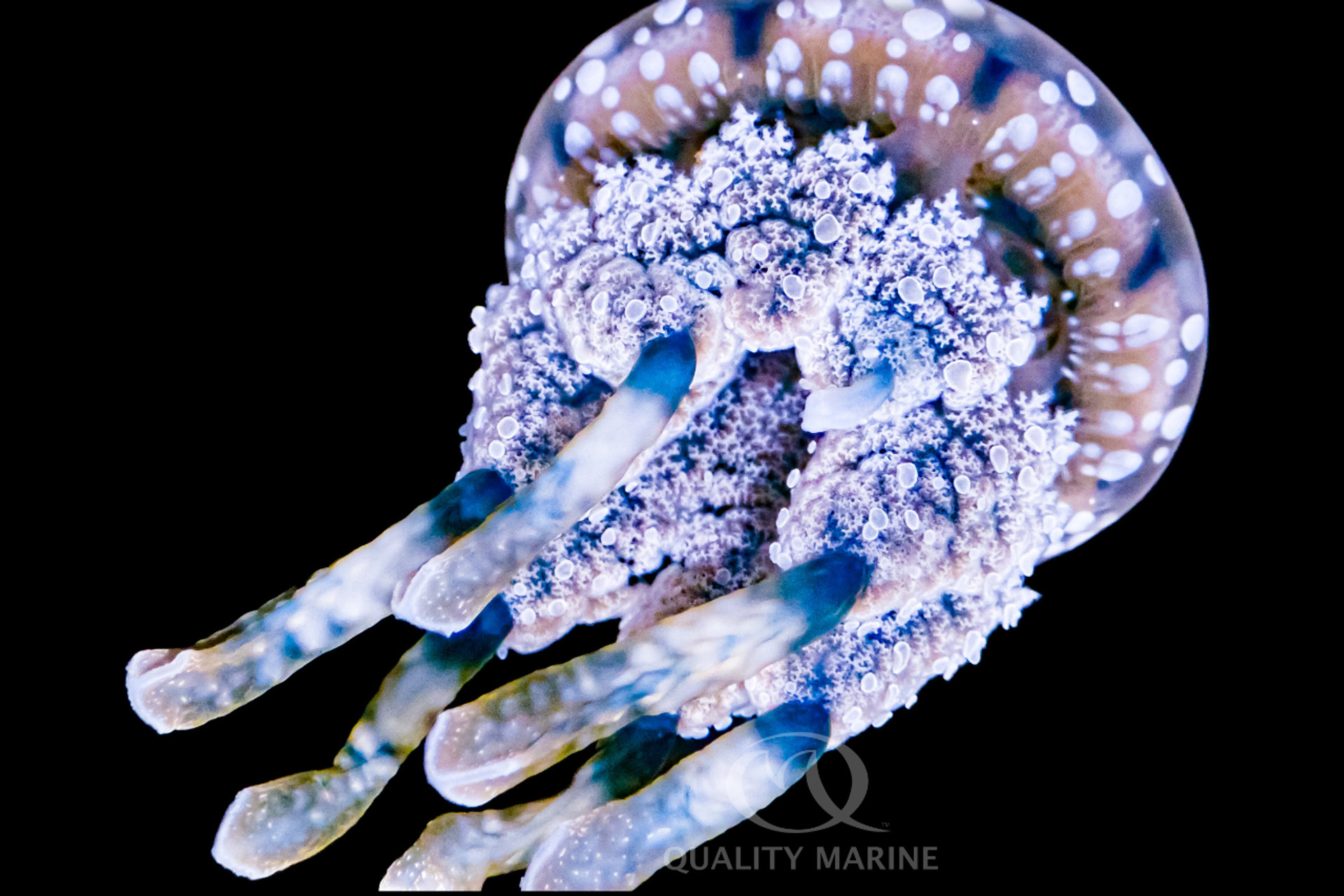Wolf And The Jellyfish

Jellyfish have fascinated humans for hundreds of years. They are a perfect dichotomy of elegant, flowing underwater beauty, and a mushy mash of stingy, ruin your day at the beach mess. In recent years, they have become popular critters for display, a feat that was entirely impossible until 1968 (some records say 1969) when a German biologist invented a holding tank to help him get jellyfish from the arctic back to his lab for study. He named this thing a Kreisel.
Not surprisingly, “kreisel” is a German word. It means top, but not in the “part above the bottom” way, but in the “old wooden spin toy” way. In regards to captive aquatics, a kreisel is a type of aquarium that is utilized to display jellyfish and more recently, sometimes rearing larval fish. A variety of German aquarists are sometimes credited for developing it, though we think the most reliable information points to it being Wolf Greve and his arctic Jellies.
Some of the most magical displays in public aquariums belong to jellyfish. If you want further proof, and can't get there yourself, check out Monterey Bay's Jelly Cam! https://www.montereybayaquarium.org/animals/live-cams/jelly-cam. There's also a lot of videos up on YouTube from great displays in the National Aquarium in Baltimore and the Georgia Aquarium, among others!

There are some jellyfish that make excellent display animals, being appropriately sized, not poisonous and relatively easy to care for with one exception: Jellies don't swim very well, and as a result, sooner or later they always get sucked into the filtration systems in every design of aquarium anyone could come up with. They also need clean water, but zero bubbles. Filtration is a challenge.
In Greve's kreisel tank, flow is very gentle, and water rotates in a circular pattern, because of this, so do the Jellyfish. The tanks have no sharp angles and the circular flow pattern (or gyre) pushes the Jellyfish and their food into the center of the display, while keeping them from colliding with each other. The water intake is hidden on the outside of the flow pattern, and the gentle consistent force of that flow pattern means that while water transfer happens effectively, whatever is being housed in the kriesel will have to be able to swim strongly enough to cross the flow pattern in order to get stuck in the filtration system; jellyfish cannot.
Greve's basic design has been adapted for use and adopted by a different aquarists for different goals. There are now U-shaped pseudokreisels, stretch kreisels that are double (or more) long and feature multiple flow gyres. They are wider than tall by as many gyres as they create. The invention of many new types of kreisel tanks is often attributed to Monterey Bay as they innovated new ways to better display larger numbers and bigger species of Jellyfish.
There is one type of Jellyfish that you can keep in a traditional aquarium: Cassiopeia Jellies, and you can read about keeping them here:https://www.qualitymarine.com/news/turning-your-display-upside-down. This is not the limit of jellies available to you if you're willing to invest in one of Greve's inventions.
Blue Blubber Jellies actually come in a wide range of colors, from almost pure white, to a navy blue so dark it looks black, there are also some Blubbers that are a deep reddish brown, a color that crayola might call “burnt sienna.” These are great jellies for the home aquarium. They are usually collected off the east coast of Australia where they be found in massive numbers sometimes referred to as “plague like.” They are also found in large numbers in the Philippines. They stay pretty small, with the largest specimens getting a foot in diameter, but this is totally flattened out, and they'll never appear that large in your display. Blubber jellies have a very fast pulse to their bell that is often described as staccato.
The staff favorite here are Violet Jellies (Mastigia sp). These jellies are incredibly ornate, and remain very small, ranging between only one and four inches long! Jellyfish from this genus are the ones that made Jellyfish Lake in Palau famous, and inland saline lakes is one of the environments they are frequently found in. They are common throughout the Indo-Pacific region, and their ease of captive reproduction now means that aquacultured specimens are frequently available. While generally some combination of white and blue and all the shades in between, golden variations also exist. Most of these jellies have lost their sting, and so would likely be popular even if they weren't so gorgeous.
Maybe you've never thought about having a jellyfish tank, but they offer a lot in wow factor and star power. They are always very skinny, being wide and tall, but not very deep (front to back), and so they can be put places where they won't take up the whole space. By design, kreisel tanks are very minimalist, as you don't want decorations in the tank to mess up the flow and have jellyfish get hung up on. As a result, these tanks are always very zen. Want to keep some Jellies? Head to your LFS, have them get you a kreisel tank, and always ask for sustainably harvested Jellies from Quality Marine!